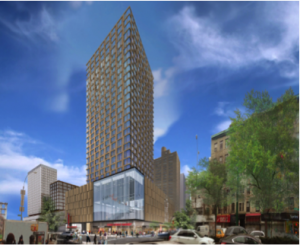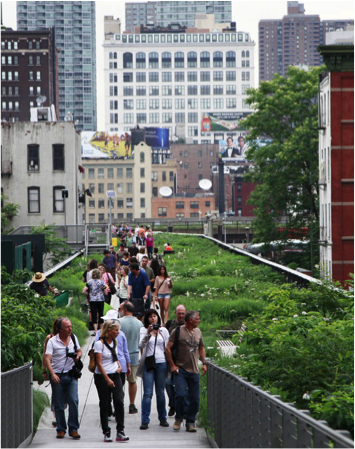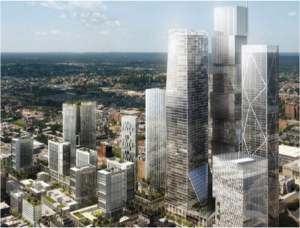How Private Investment is Revitalizing New York City

Who will you meet?
Cities are innovating, companies are pivoting, and start-ups are growing. Like you, every urban practitioner has a remarkable story of insight and challenge from the past year.
Meet these peers and discuss the future of cities in the new Meeting of the Minds Executive Cohort Program. Replace boring virtual summits with facilitated, online, small-group discussions where you can make real connections with extraordinary, like-minded people.
Keep the Builders Accountable and Let them Build
For nearly five decades, the Seward Park Urban Renewal Area has stood out as a bleak history lesson on the failings of urban planning. In 1967, the City of New York demolished the homes of more than 1,800 low-income families on the south side of Delancey Street, promising to return and resettle the predominantly Puerto Rican community into modern, clean, new construction housing. The advocates of SPURA had precedence on their side: hundreds of American cities, empowered by the Federal Housing Act of 1949, had already demolished the homes of 400,000 working families to clear the way for 11,000 new public housing units. The national program made the case that the only way to save America’s cities was to destroy them first.

Essex Crossing rendering
The 20 acres on Delancey Street, however, were never developed. Rather, the land was abandoned, where for half a century, it has sat attracting the most unsavory of squatters, from drug addicts to rats. This is set to change. A few years ago the City selected a consortium of real estate developers to build upon the land, and to remove the scar from the city’s streetscape. L+M Development Partners, Taconic Investment Partners, and BFC Partners won the City’s bid and over the next decade ‘Essex Crossing’ will bring 1.9 million square feet of mixed-use space to the Lower East Side. Phase One, which began construction this summer, will bring 561 apartments, a mix of rentals, condos, and subsidized senior and affordable units. The first phase of construction will also open a Regal Cinema, the new Essex Street Market, a supermarket, a bowling alley, and other retail and commercial space. In total, the mega-development will bring 1,000 new units of housing to the area, of which half will remain permanently affordable, and a new life to Delancey Street.
Essex Crossing represents a model of development that benefits all participants, from private investors, to public officials, to local residents. Other case studies are exemplar of this model as well. The Domino Sugar redevelopment plan will repurpose the abandoned factory and 11 acres of Williamsburg, Brooklyn waterfront by creating a mix of office space, market-rate and affordable housing, neighborhood retail, and community facilities. Upon completion in six to eight years, the project will invest $1.5 billion and build 2,300 apartments, of which 700 will be affordable. As with the Essex Crossing development, the Domino Sugar redevelopment plan only won City approval by agreeing to reserve a certain percentage of affordable housing.
SL Green’s plan for One Vanderbilt Avenue is another example of a beneficial private-public development agreement. The largest commercial landlord in New York City, SL Green recently received zoning approval for its proposed 1.6 million square foot tower, which will stand across the street from Grand Central Terminal. In exchange for a height boost, the company has agreed to invest $220 million into the terminal’s transportation infrastructure.

The Highline, NYC
Even when the local government does not demand explicit concessions, the indirect economic benefits of private development are undeniable. The High Line in West Chelsea is a prime example of this. The Bloomberg Administration converted the abandoned elevated, former rail line platform into a pedestrian greenway. Though it cost the City $112 million to build, as of 2013, the new park had spurred more than $2 billion in private investment, most in the form of luxury real estate development. Critics argue that the City could have extracted more from these developers. It is true that no affordable housing is being built around the park. Nonetheless, the park is expected to bring in an estimated $900 million in additional tax revenues over the two decades, which represents a return of nearly 900 % on the City’s investment. Meanwhile, Hudson Yards, the $20 billion redevelopment of the rail yards that abuts the High Line on the West Side of Manhattan, has generated billions in fees and taxes for the City.
Real estate interests realize that they stand to benefit foremost from vibrant public spaces. Some companies in New York are investing directly into urban amenities without any government-backed financial incentives. Since the demolition of the original, grand Pennsylvania Station in Midtown Manhattan, the area surrounding the successive structure has long held the contempt of New York commuters and workers. Vornado Realty Trust, one of the nation’s largest office landlords, is looking to change this perception by investing hundreds of millions into new retail space, public plazas and other infrastructure. The landlord owns $5.5 billion and 9 million square feet of real estate in this second-tier commercial submarket, including the 57-story 1 Penn Plaza. In early August 2015, Snohetta, the architecture firm Vornado tapped to redesign the area, opened it first plaza. The space, planted with wooden benches, gives pedestrians more room to walk and linger. As Vornado continues its investment in the area, pedestrians will benefit from a more welcome public space and the landlord from appreciating real estate values.

Downtown Newark rendering
Of course, some will argue that New York City is lucky: there is private sector interest in these urban improvement projects. The public sector can therefore rely upon private capital, but in many other cities, from Detroit to Newark, the government is often left in want of private partners. This is only partially true. New York City is certainly an exciting place to invest and do business, but the private sector is gearing up even in ‘second-tier’ cities. Community and business leaders in Newark, New Jersey recently announced a $50 million venture fund – financed by Audible.com and Prudential Financial and backed by city and state leaders – that aims to support a cluster of tech firms. The partners also announced a new startup accelerator space in downtown Newark and an outdoor high-speed Wi-Fi network that will connect public spaces and public housing projects. These private investments are necessary if downtown Newark hopes to attract and retain top talent, in the tech sector and otherwise.
This is not to say that local governments should hand the private sector carte blanche to redesign cities in its own images. Businesses pursue their own interests, and not necessarily those of the public. Indeed, businesses often pursue their interests at the expense of the public. As New York City has experienced, neighborhood revitalization happens when and where public and private interests meet. The local government has held real estate developers accountable and has taken advantage of their talents and resources, without being taken advantage of itself.
Urban economist Edward Glaeser describes “the folly of building-centric urban renewal.” Public policy should help poor people, not poor places, he believes. Glaeser cites the development of GM’s Renaissance Center in downtown Detroit in the 1970s, conceived by Henry Ford II and financed primarily by the Ford Motor Company. The Renaissance Center never fulfilled its promise to revitalize the city’s downtown. Ford built it, but they did not come.
Glaeser writes that the cardinal sin of ailing cities is their failure to educate their workforces; the faux pas of successful cities is their anti-development zealotry, manifest in zoning codes and historical districts, which hampers development. New York City is a respectable model for others cities to follow. Keep the builders accountable and let them build. Local government has plenty else to handle.
Discussion
Leave your comment below, or reply to others.
Please note that this comment section is for thoughtful, on-topic discussions. Admin approval is required for all comments. Your comment may be edited if it contains grammatical errors. Low effort, self-promotional, or impolite comments will be deleted.
3 Comments
Submit a Comment
Read more from MeetingoftheMinds.org
Spotlighting innovations in urban sustainability and connected technology
Middle-Mile Networks: The Middleman of Internet Connectivity
The development of public, open-access middle mile infrastructure can expand internet networks closer to unserved and underserved communities while offering equal opportunity for ISPs to link cost effectively to last mile infrastructure. This strategy would connect more Americans to high-speed internet while also driving down prices by increasing competition among local ISPs.
In addition to potentially helping narrow the digital divide, middle mile infrastructure would also provide backup options for networks if one connection pathway fails, and it would help support regional economic development by connecting businesses.
Wildfire Risk Reduction: Connecting the Dots
One of the most visceral manifestations of the combined problems of urbanization and climate change are the enormous wildfires that engulf areas of the American West. Fire behavior itself is now changing. Over 120 years of well-intentioned fire suppression have created huge reserves of fuel which, when combined with warmer temperatures and drought-dried landscapes, create unstoppable fires that spread with extreme speed, jump fire-breaks, level entire towns, take lives and destroy hundreds of thousands of acres, even in landscapes that are conditioned to employ fire as part of their reproductive cycle.
ARISE-US recently held a very successful symposium, “Wildfire Risk Reduction – Connecting the Dots” for wildfire stakeholders – insurers, US Forest Service, engineers, fire awareness NGOs and others – to discuss the issues and their possible solutions. This article sets out some of the major points to emerge.
Innovating Our Way Out of Crisis
Whether deep freezes in Texas, wildfires in California, hurricanes along the Gulf Coast, or any other calamity, our innovations today will build the reliable, resilient, equitable, and prosperous grid tomorrow. Innovation, in short, combines the dream of what’s possible with the pragmatism of what’s practical. That’s the big-idea, hard-reality approach that helped transform Texas into the world’s energy powerhouse — from oil and gas to zero-emissions wind, sun, and, soon, geothermal.
It’s time to make the production and consumption of energy faster, smarter, cleaner, more resilient, and more efficient. Business leaders, political leaders, the energy sector, and savvy citizens have the power to put investment and practices in place that support a robust energy innovation ecosystem. So, saddle up.






Define “affordable”. We have heard all of this before in NYC and, in fact, except for a few block redevelopments in Harlem, this has always meant moving long term residents out and replacing them with a wealthier demographic and the loss of housing that is affordable to the community’s working class and senior residents
Thanks for this Josef. Like Lorraine, I’m also curious what “affordable” means in this context – is there an index used by the city to define affordable vs low income or market rate housing? The description of the project does sound like a standard gentrification situation otherwise so the details might make a big difference. Also, you mention the city holding the developers accountable. Are there any mechanisms for the local government to ensure there’s been robust community engagement and that all plans by the developer are actually realized?
Josef, thanks for this post. Interesting to see the history and current urban political economy playing out in NYC. I’m curious if any of these new developments are focusing on “place-making.” I’m thinking of the new developments in San Francisco, specifically Mission Bay, that built ground-floor retail that has very much failed at providing appropriate and affordable spaces for small businesses. It is either a Chase bank or a Starbucks. The square footage is usually too large for an interesting local business. Any insight as to how NYC is going to support small businesses such as cafes, dry cleaners, art studios/classes for kids, daycares, etc in these new developments on the ground floors? This is what really attracts residents and creates a vibrant neighborhood.